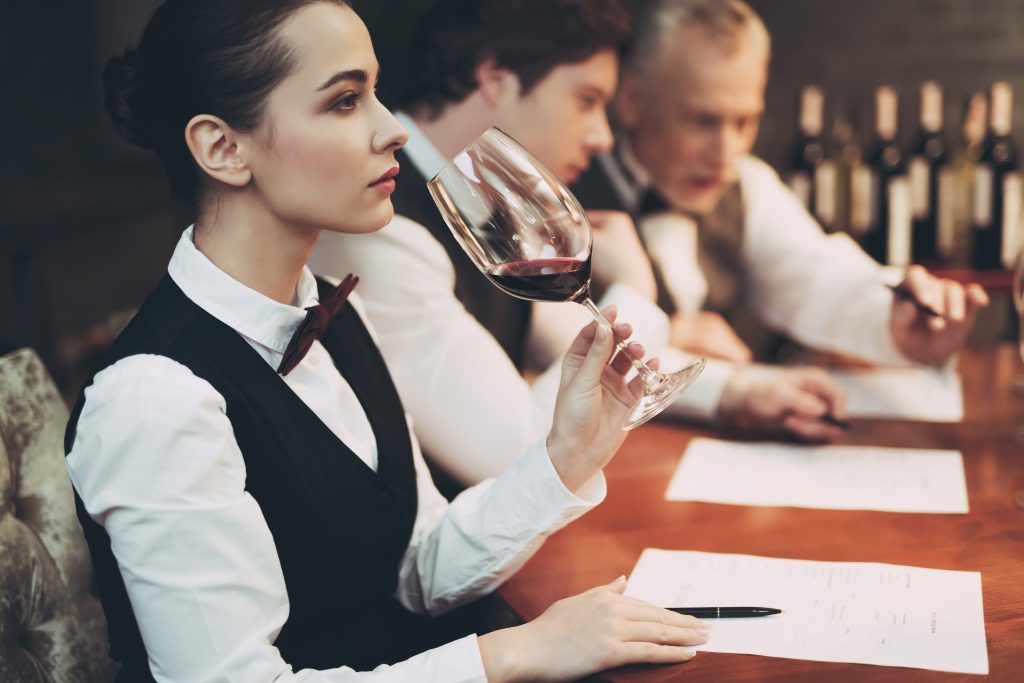Are you ready to embark on a journey through the captivating world of wine? Uncork the secrets, deepen your knowledge, and become a true connoisseur with the Wine Course Curriculum: A Beginners Guide. This comprehensive curriculum is designed to take you from wine novice to expert, equipping you with the essential tools and knowledge to confidently navigate the vast realm of wine. From understanding grape varieties and serving techniques to developing your palate and mastering the art of wine and food pairing, this guide covers it all. So, grab your glass, swirl, sniff, and sip your way through this immersive course, and unlock the true potential of your wine appreciation. Cheers to your wine adventure!
Contents
Wine Basics and Grape Varieties
To understand wine, you need to familiarize yourself with the basics of wine and the different grape varieties used in its production. Wine production is a complex process that involves grape cultivation, wine grape varieties, wine production techniques, and wine tasting techniques. Grape cultivation is an essential part of wine production, as the quality of the grapes directly affects the quality of the wine. Different grape varieties are used to produce different types of wine, each with its own distinct characteristics and flavors. Understanding the different grape varieties will help you appreciate the wide range of wines available. Wine production techniques, such as fermentation and aging, also play a crucial role in creating unique flavors and aromas in wine. Lastly, wine tasting techniques allow you to fully experience and evaluate a wine’s qualities. By learning about wine production, grape cultivation, wine grape varieties, wine production techniques, and wine tasting techniques, you will gain a deeper understanding and appreciation for the world of wine.
Serving Wine and Glassware
When serving wine, it is important to know the best practices for handling, serving, and storing wine, as well as choosing the right glassware for your occasion. Choosing the right glassware can enhance your wine drinking experience. Different glass shapes and sizes can affect the aroma and taste of the wine. For red wines, choose glasses with a wider bowl to allow the wine to breathe and release its aromas. White wines are best served in glasses with a smaller bowl to concentrate the aromas. Sparkling wines and champagne should be served in tall, narrow flutes to preserve the bubbles.
Storing wine properly is crucial to maintaining its quality. Wine should be stored horizontally to keep the cork moist and prevent it from drying out. This helps to prevent air from entering the bottle and causing oxidation. Wine should also be stored in a cool, dark place with a consistent temperature, ideally between 45-65 degrees Fahrenheit.
When serving wine, it is important to check for any faults or flaws. Common wine faults include cork taint, oxidation, and bacterial spoilage. Cork taint can give the wine a musty or moldy smell and taste. Oxidation can cause the wine to taste flat or stale. Bacterial spoilage can result in off-flavors or a vinegary taste.
Lastly, pay attention to wine labels, as they can provide valuable information about the wine. Labels typically include the wine’s name, producer, grape variety, region, and vintage year. Understanding these labels can help you make informed choices when selecting wine.
Remember that serving wine at the right temperature is crucial. Red wines are generally served slightly below room temperature, around 60-65 degrees Fahrenheit. White wines are best served chilled, around 45-50 degrees Fahrenheit. Sparkling wines and champagne should be served well chilled, around 40-45 degrees Fahrenheit. By following these guidelines, you can ensure that you are serving wine in the best possible way.
Developing Your Sense of Taste
Enhance your wine tasting skills by practicing the 4-step tasting method used by professionals. Developing your sense of taste is an important aspect of becoming a wine connoisseur. By honing your ability to identify flavors and detect wine faults, you can elevate your wine tasting experience.
To help you in this journey, here is a table highlighting some key aspects to consider when developing your sense of taste:
| Identifying Flavors | Wine Faults | Tasting Practice |
|---|---|---|
| Pay attention to the different flavors present in the wine, such as fruity, floral, or oaky notes. | Learn to recognize common wine faults, such as cork taint or oxidation, which can affect the taste and quality of the wine. | Regularly practice tasting various wines to train your palate and improve your ability to discern different flavors and aromas. |
In addition to practicing tasting, it is also important to understand your own tasting abilities. Some individuals are known as “wine supertasters,” who have a heightened sensitivity to taste. If you believe you might be a wine supertaster, it can be beneficial to seek out specialized training or guidance to further enhance your skills.
Lastly, mastering proper handling techniques is crucial in order to fully appreciate the taste of wine. This includes proper glassware selection, serving temperature, and decanting if necessary. By paying attention to these details, you can ensure that you are experiencing the wine as intended by the winemaker.
Developing your sense of taste is a lifelong journey. With practice, knowledge, and a curious palate, you can continue to refine your wine tasting abilities and deepen your appreciation for the world of wine.
Handling Wine
Properly handling wine is essential for preserving its taste and quality. Whether you’re a wine enthusiast or just starting to explore the world of wine, here are some tips to help you handle wine like a pro:
- Cork handling: When opening a bottle of wine, be gentle with the cork. Twist it slowly and steadily to avoid breaking the cork or pushing it into the wine. This will ensure that the wine remains untainted and free from any unwanted debris.
- Wine pouring: When pouring wine, hold the bottle by the base or the punt (the indentation at the bottom). This provides better control and prevents any unnecessary shaking or agitation of the wine. Aim to pour the wine smoothly and without any drips down the side of the bottle or glass.
- Champagne opening: Opening a bottle of champagne can be a celebration in itself. To do it safely, hold the cork firmly and twist the bottle, not the cork. This will help release the pressure gradually and prevent any sudden pops or spills.
- Wine bottle sizes: Wine bottles come in different sizes, from standard 750ml bottles to larger formats like magnums and Jeroboams. Each size has its own purpose and can affect the aging process of the wine. It’s important to consider the size of the bottle when storing and serving wine.
Buying Wine
To make informed choices when buying wine, consider exploring different wine regions and grape varieties. This will help you understand the characteristics and flavors associated with specific wines, allowing you to choose the ones that align with your preferences. When browsing through wine options, pay attention to the wine labels. They often provide valuable information about the grape variety, region of origin, and sometimes even tasting notes. Understanding these labels can help you narrow down your choices and make more confident decisions.
Another factor to consider when buying wine is the price. While it’s true that higher-priced wines can sometimes indicate better quality, it’s not always the case. There are plenty of great value wines out there that offer exceptional taste without breaking the bank. Don’t be afraid to explore different price ranges and experiment with different options to find the best value for your budget.
It’s also important to be aware of potential wine faults. These can include off-putting aromas or flavors that indicate a problem with the wine. Learning about common wine faults can help you avoid purchasing bottles that may not meet your expectations.
Lastly, think about the practical aspects of buying wine, such as the type of wine glasses you have at home and the storage conditions you can provide. Different styles of wine glasses can enhance the tasting experience, so having the right ones on hand can make a difference. Additionally, proper storage, including temperature control and avoiding exposure to light, can help preserve the quality of your wines over time.
Course Overview and Objectives
Explore the course overview and objectives to gain a comprehensive understanding of what you will learn in this wine course.
- Course Description: Unlocking the World of Wine
- This course promises to illuminate the world of wine, guiding you on a journey of discovery and appreciation.
- You will master fundamental wine concepts and terminology, equipping you with the knowledge to confidently navigate the wine world.
- Traverse iconic wine regions of France, Italy, Spain, United States, Portugal, Australia, Austria, Greece, and beyond, understanding their unique characteristics and contributions to the world of wine.
- Dive deep into the alchemy of winemaking, unraveling the intricate process that transforms grapes into the nectar of the gods.
- Exploring Wine Regions and Grape Varieties
- Embark on a virtual global wine tour, exploring iconic wine regions and their diverse grape varieties.
- Understand the transformative journey of grapes, from vine to bottle, and grasp the pivotal role they play in crafting distinct wines.
- The Art of Tasting
- Develop your tasting skills and learn to savor wines like a professional.
- Know what to look for in taste and smell, understanding the nuances of wine flavors.
- Appreciate the sensory experience of wine, allowing you to fully enjoy and evaluate a variety of wines.
- Selecting and Understanding Wines
- Gain the expertise to choose the perfect bottle every time, whether you’re dining at an upscale restaurant or selecting wines for meals at home.
- Navigate wine selections with confidence, understanding wine labels and classifications.
- Learn about different wine styles and varietals, expanding your knowledge and enhancing your wine selection abilities.
Exploring Wine Regions and Grape Varieties
Embark on a virtual journey through iconic wine regions and diverse grape varieties, discovering the transformative journey of grapes from vine to bottle. Wine regions around the world offer unique terroirs that shape the characteristics of the grapes grown there. From Old World to New World, each region has its own distinct grape varieties and styles of winemaking. Let’s explore some key aspects of wine regions and grape varieties:
| Grape Varieties: Old World vs. New World | Lesser Known Wine Regions |
|---|---|
| Old World wine regions, such as France and Italy, are known for their traditional grape varieties like Cabernet Sauvignon and Chardonnay. New World regions like California and Australia often experiment with different grape varieties, resulting in exciting blends and unique flavors. | While regions like Bordeaux and Napa Valley are well-known, there are lesser-known wine regions that offer hidden gems. Explore regions like Portugal’s Douro Valley or Austria’s Wachau Valley to discover new and exciting wines. |
| Climate and Grape Varieties | Organic and Biodynamic Winemaking |
|---|---|
| The climate of a wine region greatly influences the grape varieties that thrive there. Cooler climates are ideal for grapes like Pinot Noir, while warmer climates are suited for varieties like Syrah. | Organic and biodynamic winemaking practices have gained popularity in recent years. These methods focus on sustainability, using natural processes to produce wines that truly express the terroir. |
| Wine Varieties and Aging Potential |
|---|
| Different grape varieties have varying aging potentials. While some wines are best enjoyed young and fresh, others, like Cabernet Sauvignon and Nebbiolo, benefit from aging, developing complex flavors and aromas over time. |
As you delve into the world of wine, exploring different regions and grape varieties will broaden your palate and deepen your appreciation for the art of winemaking. Cheers to the journey ahead!
The Art of Tasting
Now let’s delve into the art of tasting wine and explore the sensory experience it offers. When it comes to savoring wine, there are a few techniques that can enhance your enjoyment and help you appreciate the flavor nuances. Here are four tips to help you develop your professional tasting skills:
- Engage your senses: Start by observing the wine’s appearance, noting its color and clarity. Then, bring the glass to your nose and take a moment to inhale the aromas. Pay attention to the different scents and try to identify the various components that contribute to the wine’s aroma.
- Take small sips: When it comes to tasting, take small sips to fully experience the wine’s flavors. Let the wine coat your palate and take note of the different taste sensations. Is it fruity, oaky, or acidic? Pay attention to the balance and complexity of the flavors.
- Pay attention to texture: As you swirl the wine in your mouth, notice the texture. Is it smooth and velvety, or does it have a more gripping, tannic feel? The texture can greatly enhance the overall sensory experience of the wine.
- Reflect on the finish: After swallowing (or spitting, if you prefer), pay attention to the lingering flavors and sensations. Does the taste stay with you, or does it dissipate quickly? The finish can provide valuable insights into the wine’s quality and aging potential.
Selecting and Understanding Wines
When selecting wines, it is important to understand the different styles and varietals available to suit your preferences. To help you navigate the world of wine selections, let’s take a closer look at wine labels, classifications, styles, varietals, and how they can guide you in making the perfect wine choice.
| Wine Labels | Wine Classifications |
|---|---|
| – Provide important information about the wine, such as the producer, region, and vintage. | – Help categorize wines based on certain criteria, such as grape variety, region, or production method. |
| – Can give you clues about the style and characteristics of the wine. | – Common classifications include red, white, rosé, sparkling, and fortified wines. |
| – Look for terms like “dry,” “sweet,” or “medium-bodied” to get an idea of the wine’s taste profile. | – Understanding classifications can help you narrow down your choices and find wines that align with your preferences. |
| Wine Styles | Wine Varietals |
|---|---|
| – Refers to the overall characteristics and qualities of a wine. | – Refers to the specific grape variety used to make the wine. |
| – Examples of wine styles include light-bodied, full-bodied, fruity, oaky, and crisp. | – Examples of wine varietals include Cabernet Sauvignon, Chardonnay, Pinot Noir, and Sauvignon Blanc. |
| – Understanding different wine styles can help you choose wines that pair well with specific dishes or occasions. | – Exploring different wine varietals allows you to discover your personal preferences and expand your wine knowledge. |
Wine and Food Pairing
Discover the art of pairing wine and food to elevate your dining experience. Here are four essential tips to help you navigate the world of wine and food pairing:
- Wine and Cheese: One of the most classic pairings, wine and cheese go hand in hand. But it’s not just about any wine with any cheese. The key is to match the intensity of the flavors. For example, a bold red wine like Cabernet Sauvignon pairs well with aged cheddar, while a crisp white wine like Sauvignon Blanc complements creamy goat cheese.
- Pairing Rules: There are a few basic rules to keep in mind when pairing wine and food. Firstly, match the weight of the wine with the weight of the dish. Lighter wines like Pinot Noir work well with delicate dishes like roasted chicken, while full-bodied wines like Malbec pair nicely with hearty beef dishes. Secondly, consider the flavors and aromas of the wine and food. Look for complementary flavors or contrasting flavors to create balance and harmony.
- Regional Pairings: Exploring regional pairings can be a great way to enhance your wine and food experience. For example, if you’re enjoying Italian cuisine, try pairing it with an Italian wine like Chianti or Barolo. The flavors of the food and wine will complement each other beautifully.
- Dessert Wines and Wine and Chocolate: Don’t forget about dessert wines and the magical combination of wine and chocolate. Dessert wines like Port or Sauternes are sweet and luscious, perfect for pairing with rich desserts like chocolate cake or crème brûlée. And when it comes to wine and chocolate, look for a wine with enough sweetness and richness to stand up to the intensity of the chocolate.



